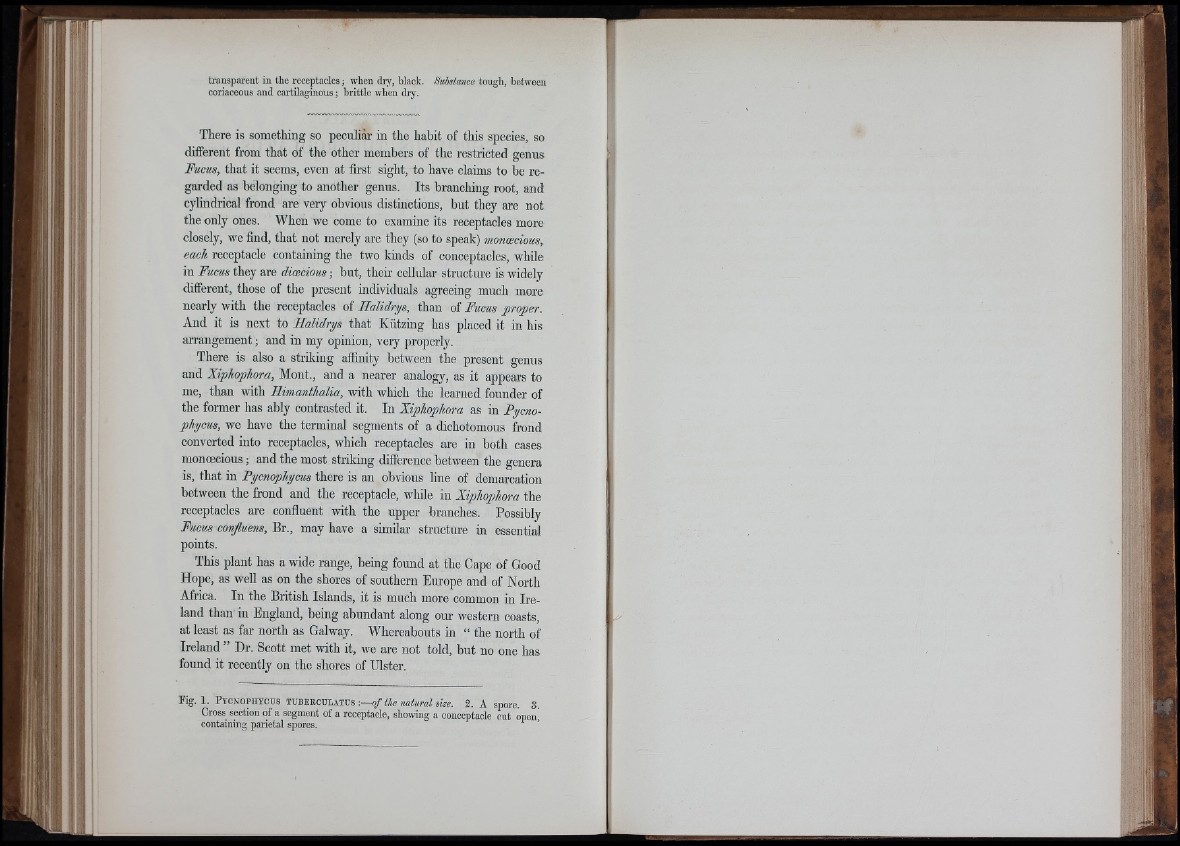
1 ^
n
'A
'îf Mîl
I
i l
U
i
transparent in the receptacles ; when diy, black. Suhstance tough, between
coriaceous and cartilaginous ; brittle when dry.
There is something so peculiar in the habit of this species, so
different from that of the other members of the restricted genus
Fucus, that it seems, even at first sight, to have claims to be regarded
as belonging to another genus. Its branching root, and
cylindrical frond are very obvious distinctions, but they are not
the only ones. When we come to examine its receptacles more
closely, we find, that not merely are they (so to speak) monoecious,
each receptacle containing the two kinds of conceptacles, while
in Fucus they are dioecious ; but, their cellular structure is widely
different, those of the present individuals agreeing much more
nearly with the receptacles of Halidrys, than of Fucus proper.
And it is next to Halidrys that Kiitzing has placed it in his
arrangement ; and in my opinion, very properly.
There is also a striking affinity between the present genns
and Xiphophora, Mont., and a nearer analogy, as it appears to
me, than with Himanthalia, with which the learned founder of
the former has ably contrasted it. In Xiphophora as in Pycnophycus,
we have the terminal segments of a dichotomous frond
converted into receptacles, which receptacles are in both cases
monoecious ; and the most striking difference between the genera
is, that in Pycnophycus there is an obvious line of demarcation
between the frond and the receptacle, while in Xiphophora the
receptacles are confluent with the upper branches. Possibly
Fucus confluens, Br., may have a similar structure in essential
points.
This plant has a wide range, being found at the Cape of Good
Hope, as well as on the shores of southern Em-ope and of North
Africa. In the British Islands, it is much more common in Ireland
than in England, being abundant along our western coasts,
at least as far north as Galway. Whereabouts in “ the north of
Ireland ” Dr. Scott met with it, we are not told, but no one has
found it recently on the shores of Ulster.
Fig. 1. PYCNoraYCCs TUBEROCLAIUS :— o f the natural size. 2. A spore. 3.
Cross section of a segment of a receptacle, showing a conceptacle cut open
containing parietal spores. ’